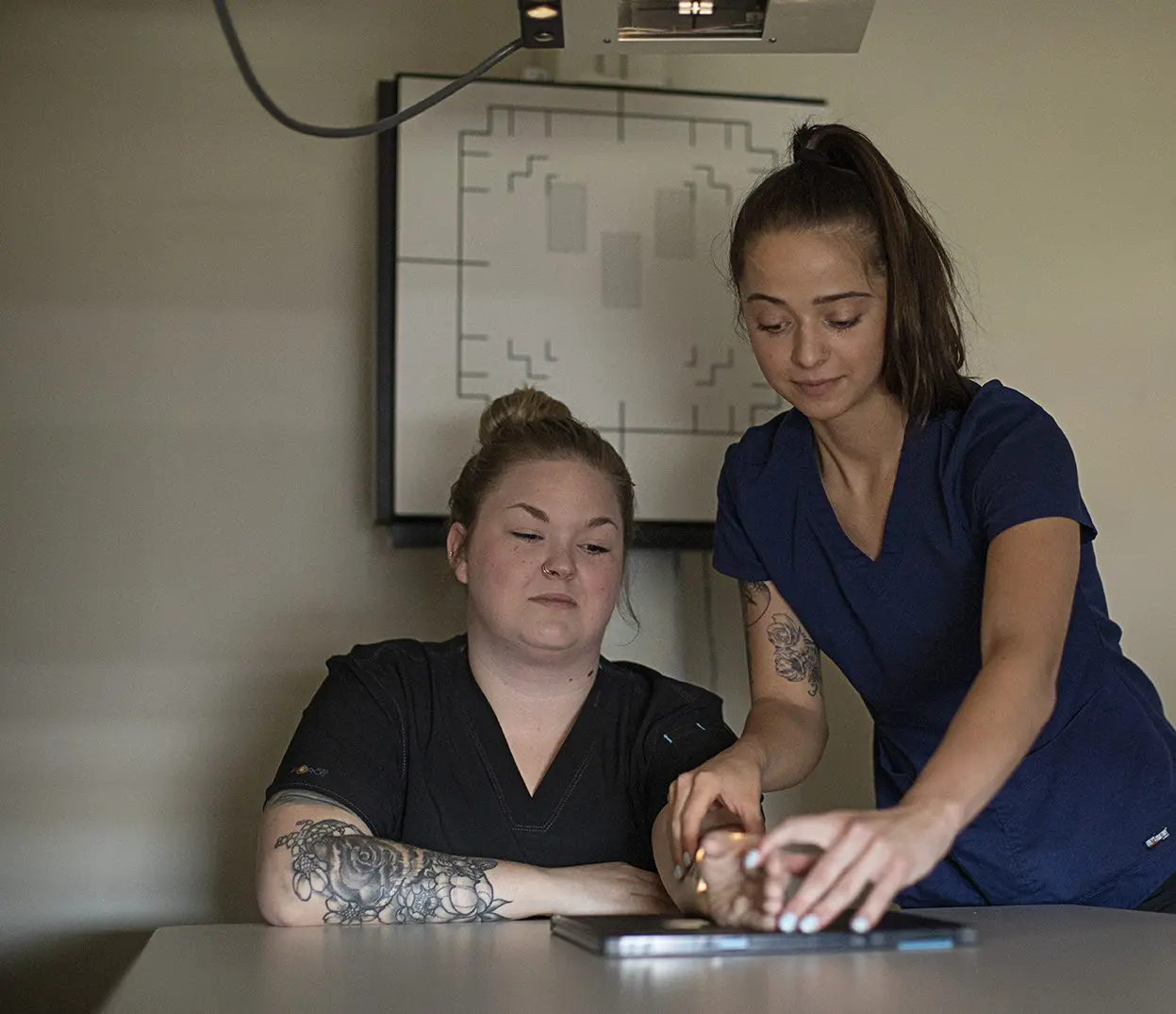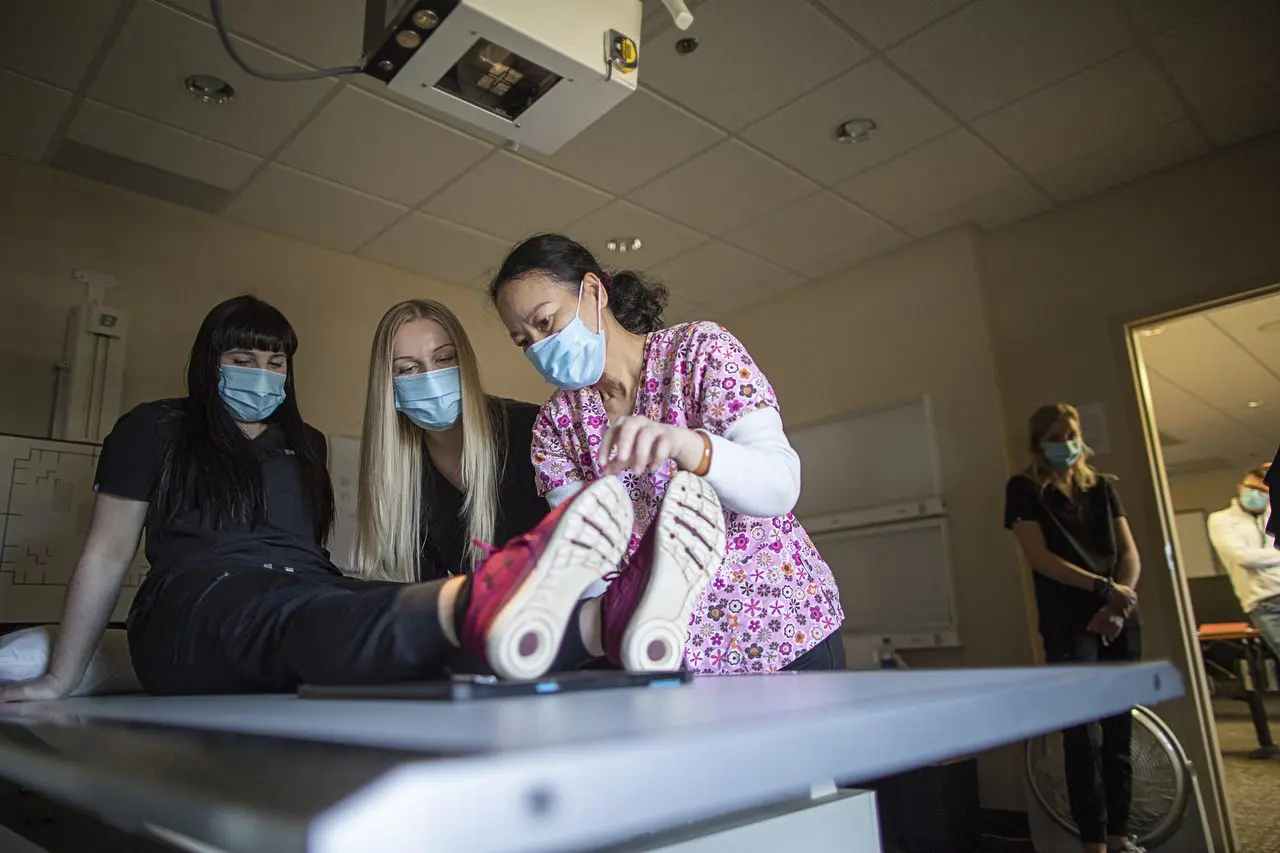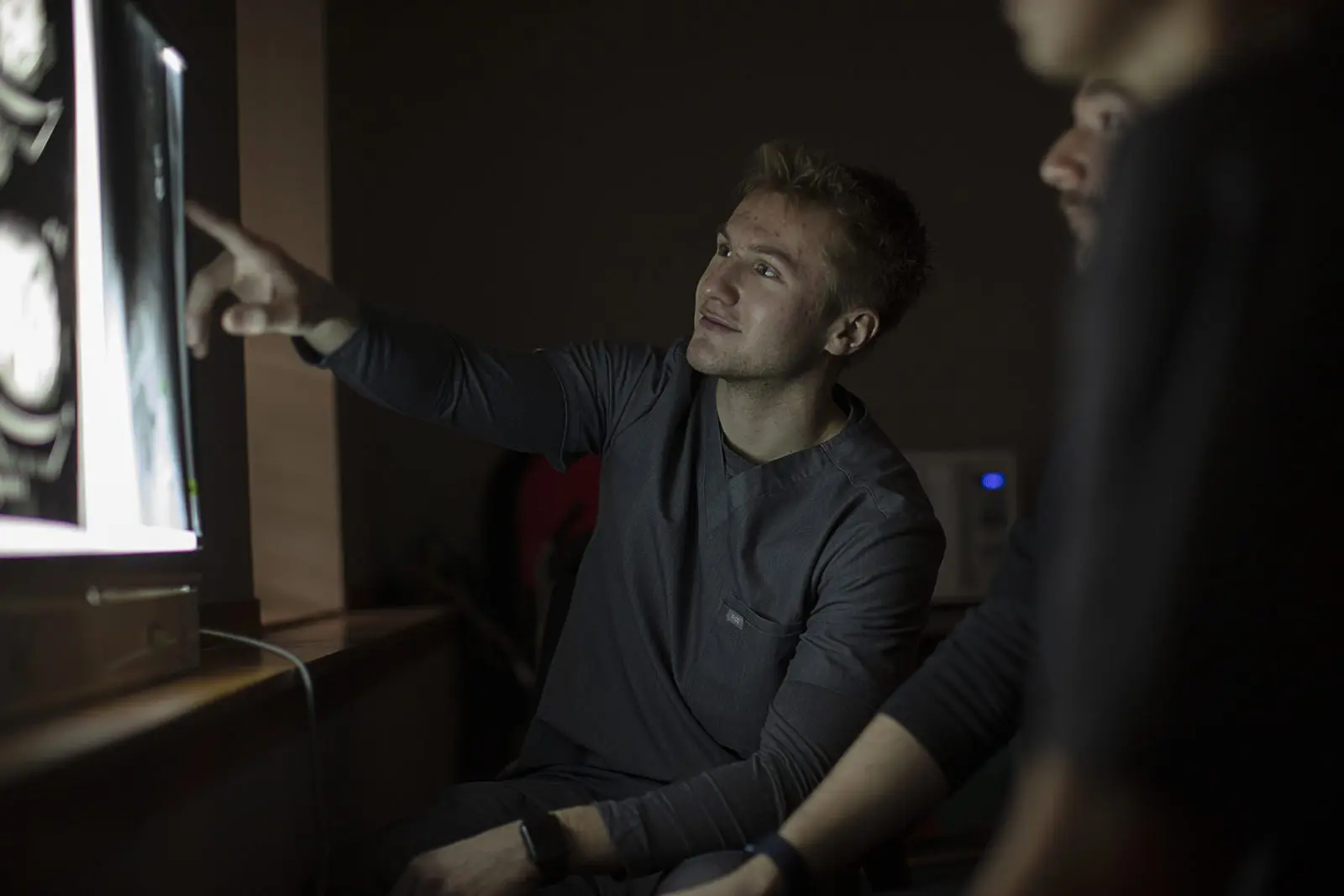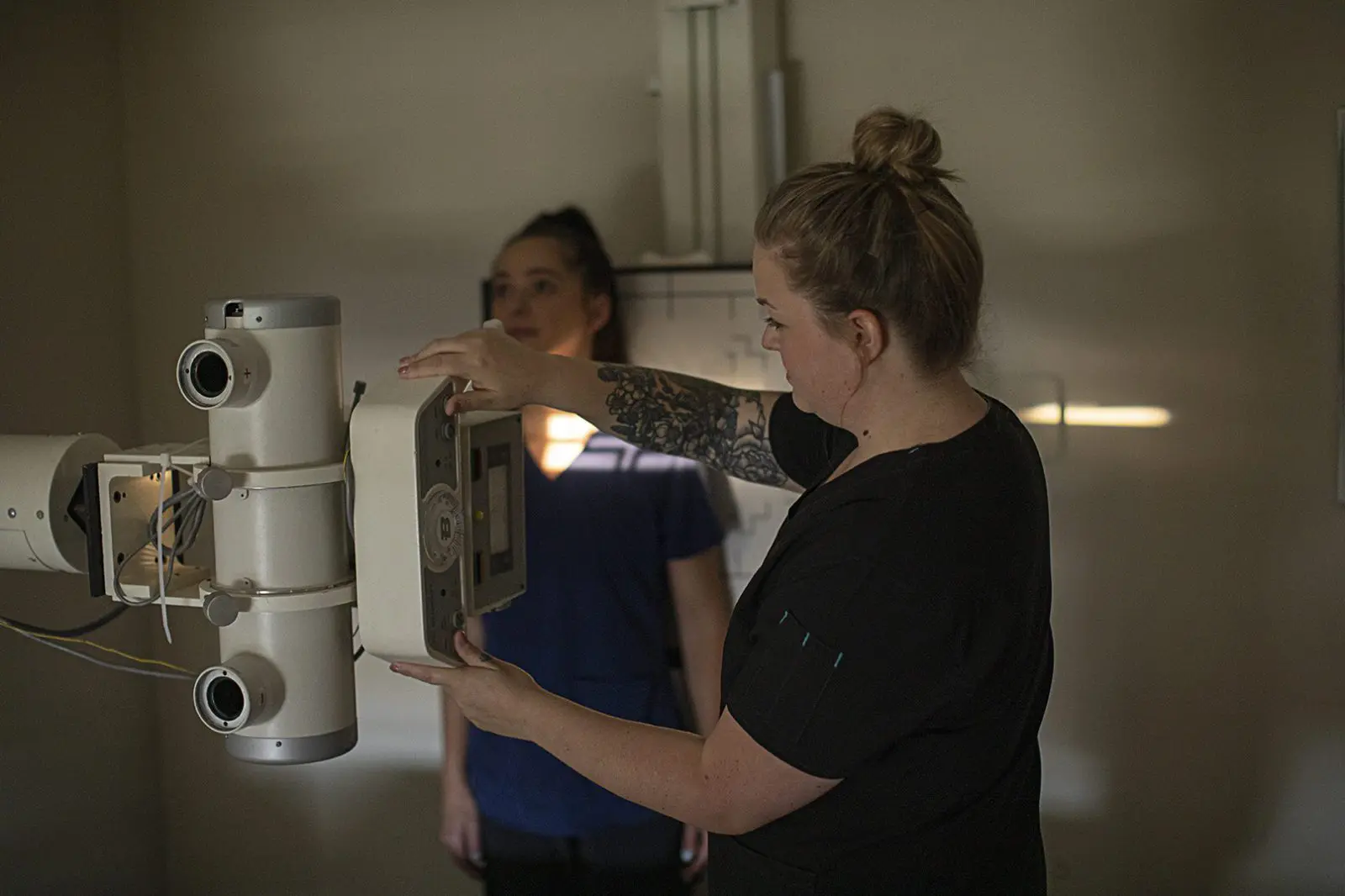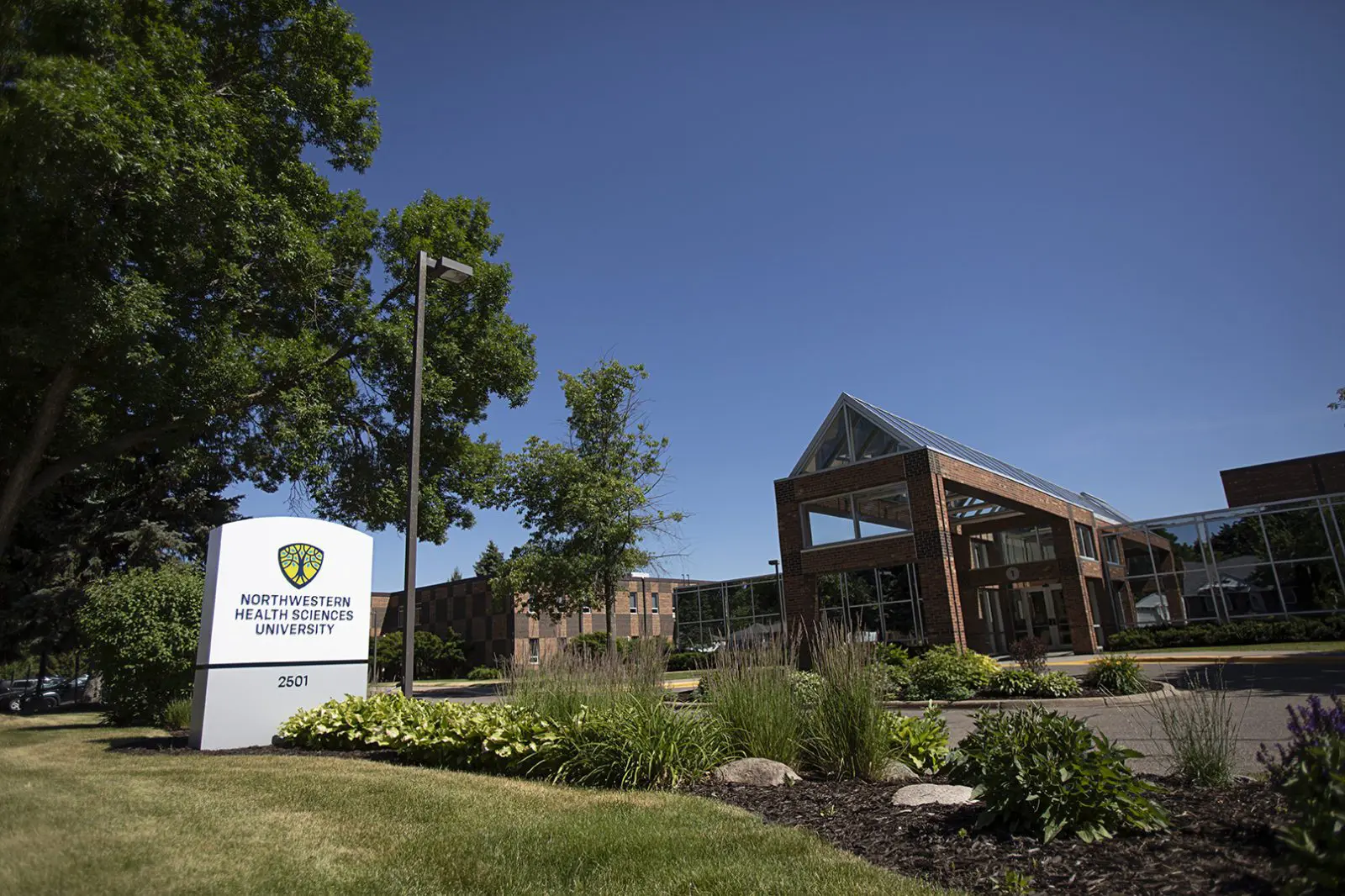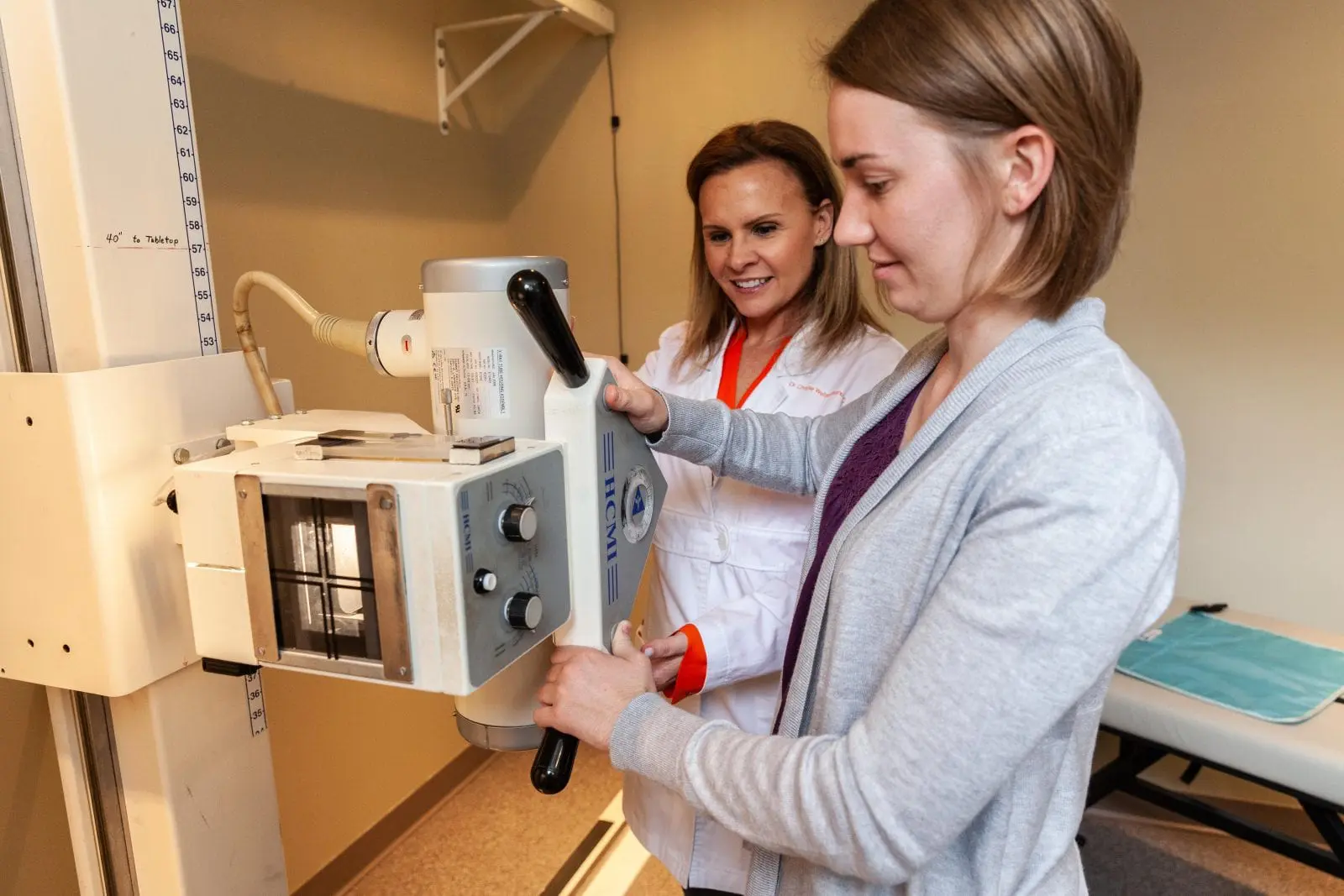What to Look for in a Radiologic Technology Program: 10 Questions for Finding the Right One for You
To become a radiologic technologist, also known as a “rad tech” or an “x-ray tech,” you’ll first need to attain a minimum of an associate’s degree from a radiologic technology program. But which program should you choose?
In the following, we’ll help you answer that by exploring what to look for in a radiologic technology program.
If you’re interested in a healthcare career, love working with technology, and have great people skills, being a radiologic technologist could be an excellent fit. On top of that, you could be working in the profession in as few as two years.
Let’s look at the questions you should be asking as you consider potential programs.
1. What is the sequence of coursework and clinical training?
The subjects that radiologic technology programs teach are generally similar to one another. However, programs may vary significantly in other ways. One major example is in how they provide hands-on, clinical experience. Here are two ways that programs handle this:
Courses and internships attended concurrently
Programs without up-to-date radiologic equipment may do basic practice demonstrations in a classroom setting. But they rely on a student’s internship experience at a real-life clinic to provide the majority of hands-on training.
Other programs have updated equipment and incorporate more thorough hands-on instruction. This can complement the internship experience. Note that a first-year student will be limited in what they can do at a clinical site.
Programs with concurrent courses and internships may have students attend courses on certain days of the week and participate in their clinical internship on other days.
Courses and hands-on simulation labs prior to internships
Alternatively, there are programs in which students complete all of their coursework, including hands-on labs, up front. Students then complete their internships in an actual clinical setting during the final phase of the program.
This learning approach can provide a number of advantages. Consider the following highlights from the Radiologic Technology program at Northwestern Health Sciences University (NWHSU):
Supervised, hands-on practice with advanced equipment. During on-campus simulation lab courses, students learn to use the kind of state-of-the-art technology they’ll be using in their actual clinical internships—but in a comfortable setting under the supervision of supportive instructors.
End-to-end exam practice. Students do more than learn how to operate equipment. They practice conducting imaging exams from beginning to end, sometimes in role-playing scenarios. This serves as great preparation for internships.
Instruction on patient communication. Prior to being in real clinical situations, students benefit from receiving guidance not only on technical aspects of procedures but also on patient communication, a critical component of the profession, which can be more difficult to address during internships.
A focus on why, not just how. NWHSU instructors help students understand not only how to perform a radiologic exam but also why it’s being performed. Because of that, students gain valuable practice analyzing imaging, identifying errors, and correcting them—practice that will serve them well in their internships and when they enter the workforce.
Accessible facilities. Students, understandably, may want additional time to practice. So, beyond formal lab course hours, the simulation lab is open for them on weekends, Fridays, and Mondays.
Thorough preparation for a better internship experience. For their final two trimesters of full-time clinical internships, students apply all that they’ve learned from their first four trimesters. Many find this helps to make the clinical internship stage less stressful because they’re bringing a solid foundation of hands-on skills to a real-life clinical setting.
2. How are courses taught?
Take the time to understand how a given program provides instruction over the duration of your time as a student. Will you be prepared to dedicate the time it takes to complete the program?
For instance, NWHSU offers an A.A.S. Degree in Radiologic Technology. This is a rigorous 24-month program that comprises four trimesters of coursework and two trimesters of clinical internships:
Courses are typically taught in a hybrid format:
- Some courses are live online and you must attend them at a specified time.
- Other courses are pre-recorded and you can complete them online and on your own time.
- Select courses, such as hands-on labs, are provided on campus and require in-person attendance.
Radiologic technology students at NWHSU typically need to be on campus two to three days a week, depending on which trimester they’re in. (For related information, please see How to Become a Radiologic Technologist.)
3. What are class sizes like?
How many people will be in your class, or cohort? Smaller class sizes will make it much easier to get valuable one-on-one attention as you learn imaging skills and procedures.
NWHSU, for example, limits each cohort of students to 12, and, to promote more individualized instruction, the hands-on labs are limited to six students.
4. What kind of equipment does the program provide?
The hands-on component of your radiologic technologist education is critical. In your program search, make sure to inquire about the instrumentation and technology that you’ll have access to for on-campus training.
NWHSU, for instance, offers the very latest in radiologic technology instruments. This can give students an excellent hands-on opportunity to prepare for a wide range of real-life clinical scenarios, such as trauma situations, where they need to apply both critical thinking and technical competence.
5. How does the overall learning environment prepare you for the healthcare profession?
Radiologic technologists play an integral part of a healthcare team. Having a learning environment where all students are focused on healthcare can be a great first step toward a career where you’ll be working with a variety of other healthcare professionals.
NWHSU, for instance, is 100% focused on health science as it trains the next generation of healthcare professionals—not only radiologic technologists but also:
- Radiation therapists
- Medical assistants
- Medical lab scientists
- Medical lab technicians
These are in addition to students pursuing careers as chiropractors, acupuncturists, and massage therapists.
6. Are graduates from the program employed in the field?
As you consider a variety of factors in choosing a program, you should also ask about the employment of the graduates. How many graduates of the program have found a job soon after program completion?
NWHSU’s graduates for radiologic technology from the last few years are 100% employed in the field, and our graduates work at a variety of clinics and other healthcare facilities throughout the Twin Cities and beyond.
7. Where is the radiologic technology program located?
Think through the implications of where you’ll be attending school. Take NWHSU in Bloomington, Minn., as an example:
A beautiful campus. The NWHSU campus comprises 25 scenic acres. Here students can enjoy the natural surroundings outside and also take advantage of the many campus facilities we have for studying, socializing, or a little of both.
A safe, vibrant place to live, work, and play. Don’t forget to research the location in terms of overall lifestyle. The Twin Cities area consistently ranks in the top ten most livable places in the U.S., offering big city activities as well as a community feeling through its unique neighborhoods, numerous lakeside parks, and hundreds of miles of biking and walking trails.
A healthcare hub. NWHSU is located in the Twin Cities Metro Area, a major center of progressive healthcare innovation within a state that includes healthcare industry leaders such as the Mayo Clinic and Medtronic.
In fact, Minnesota has been ranked as the No. 1 Best State for Health Care because of its exceptional healthcare system and its residents’ healthy way of life.
NWHSU has cultivated partnerships with numerous healthcare-related organizations in the region, giving students more opportunities to make connections, gain valuable experience, and plan their future.
8. How much will it cost?
A program in radiologic technology should be as transparent as possible as it clearly lays out its fees. As you consider cost, try to include all the other potential expenses that will be involved in attending. For example, if you have to relocate, what will be the cost of rent and other living expenses?
Make sure you incorporate financial questions into your search early on. The best place to start is with a school’s financial aid specialists. Be sure to also research both school-sponsored scholarships and external scholarships.
Finally, here’s an important caveat as you research programs: Don’t simply look for the lowest cost. Remember that the value you gain from attending a given program will depend a lot on how well it prepares you to be a successful professional.
The best programs not only deliver subject matter but also help you develop the hands-on skills that are integral to being a radiologic technologist.
9. What student services are offered?
Keep in mind that being a student involves a lot more than completing assignments and attending classes. Make sure to explore how a given school or university can help you make the most of your student experience.
At NWHSU, for example, the Office of Student Affairs has a wide range of programs and services that not only enhance your student experience but also help you prepare for your career. Here are highlights:
Career Services. Students can receive one-on-one career counseling; check out career fairs; attend workshops to prepare for job interviews; and search for job opportunities more efficiently with the members-only job platform Handshake.
Counseling Center. Students have access to no-cost mental health counseling, both on campus and online, as well as a network of community-based resources.
Student clubs and organizations. NWHSU has over 50 clubs and organizations available that cover a wide range of interests and give you a chance to pursue topics beyond those taught in your courses.
Student Senate. By participating in the Student Senate, students can help determine how they experience life at NWHSU. They also serve as a liaison between the student body and the larger community, helping to plan student and community events.
The above are in addition to Academic Support services such as tutoring, which is available at no cost to all students.
10. Can I easily learn more about the program and the school?
You’re investing in your future when you enroll in a radiologic technology program. So, it’s well worth your time to seize the opportunities you have to better understand the program you’re considering. Does it provide convenient ways for you to do that?
NWHSU puts on multiple admissions events a year for prospective students, in addition to virtual events. You can also schedule a campus tour, in person or virtually, and set up phone call appointments to talk to an admission counselor and a current student.
Take the next step toward your future
Exploring the possibility of a career as a radiologic technologist is an exciting time! You’ve just absorbed a lot of helpful info on what to look for in a radiologic technology program. Want help putting it all in perspective? Do you have questions about your specific situation?
This is the perfect time to take the next step. Reach out to NWHSU for personalized support to better understand what our program has to offer you.
LEARN MORE About Our Radiologic Technology Program
